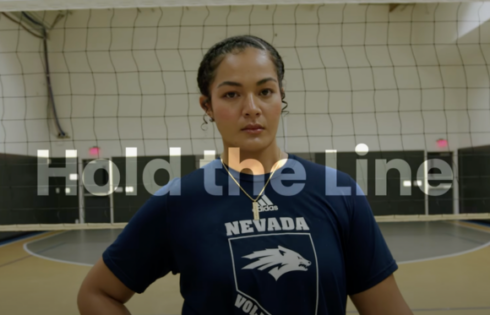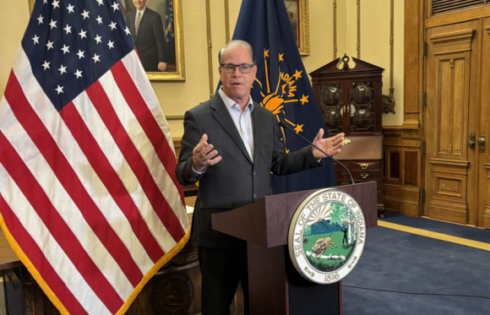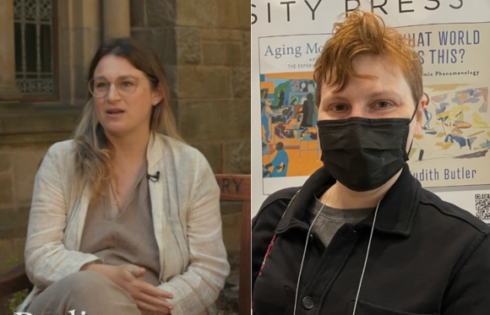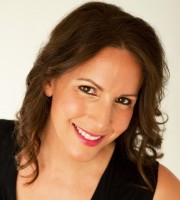If conservative lawmakers want to win elections, they better pay attention to and address youth voters currently swayed by leftist professors who indoctrinate them for Democrats with cherry-picked lesson plans and biased lectures, several prominent educators told The College Fix.
“If those who value America’s deeper traditions hope to win future elections, they had better get serious about higher education,” said Peter Wood, president of the National Association of Scholars. “Ceding the colleges and universities to cultural and political progressives has led to generations of graduates who have scant knowledge of our nation’s founding principles, a distorted understanding of its ideals, and settled patterns of disdain for genuine intellectual diversity.”
And that’s affecting how they vote, bigtime.
President Barack Obama won re-election with the help of 18- to 29-year-olds. Sixty percent of voters that age broke for Obama, compared with the 37 percent in that category who supported Republican contender Mitt Romney, exit polls showed. Those figures were especially hard felt in key swing states Romney needed to win the election, as young voters came through for Obama in Ohio, Florida and Virginia, where he led by margins of about 20 to 30 percentage points against Romney among 18- to 29-year-olds.
While popular culture and Obama’s hip image played a role in that outcome, what young people learn from their professors is just as influential, several scholars told The College Fix.
“The character of our universities and the make-up of the faculty certainly has a lot to do with the turn-out of young people for Barack Obama,” said Paul Rahe, a history professor at Hillsdale College. “To a degree that is shocking, the professoriate has become openly, even ostentatiously partisan in recent years. … In the last decade or so … academics of a conservative disposition have almost entirely been shut out.”
Wood notes many students don’t even realize they’re being fed partisan politics from the podium.
“College professors have an out-sized influence on their students, though the students often fail to realize it,” Wood said. “The influence surely has as much to do with the attitudes teachers convey and the ambiance they create on campus as it does the specific substance of what they say. A great deal is conveyed by what professors choose to ignore or to treat dismissively.”
For example, notes Emory University English professor Mark Bauerlein: “If a course in freshman composition examines the Civil Rights movement but includes no readings coming from those at the time who worried about issues of states’ rights and federal intervention (but might otherwise have been entirely free of racism, such as Barry Goldwater), then we have a skew to the left but none of the 18-year-olds notice. Here we can’t really get input from students about the effects because students aren’t even aware of them.”
These influences by omission, as well as outright propagandizing by professors, take their toll on students, Wood said.
“A great deal of contemporary higher education aims at drawing students in the opposite direction—away from personal responsibility and towards images of themselves as members of groups whose only meaningful actions arise from participation in those groups’ struggles,” he said. “The campus is, in this sense, among the least diverse places in American life. A dreary uniformity of opinion pervades it, all the drearier because the campus authorities and increasingly the students proceed under the self-willed illusion that they are robust individualists who just coincidentally all think the same thing by margins of eight or nine to one.”
And while the role of higher education is vital in shaping young people’s minds – and thus the future of America – popular culture and what’s held up as important by secular society also pervades how college students think, the educators said.
“Most adolescents enter college already solidly in the liberal camp, though not in an informed way,” Bauerlein said. “The culture they consume on TV, in youth music, in movies, and on the Web is altogether anti-conservative. Traditional authorities are mocked and rebellious teens are glamorized. … After years of Lady Gaga, Friends, and the rest, conservatism strikes them as authoritarian and backward and irrelevant. With his interviews in Rolling Stone and appearances on The Daily Show, Obama seems a whole lot more hip and timely and multicultural than a white guy in a suit. That influence means a whole lot more than the leftist twerp in Sociology 101.”
Rahe offered similar sentiments.
“There is another reason … why college students may have sided with Barack Obama,” he said. “He presented himself as the great defender of the sexual revolution – which began on American campuses in the late 1960s when I was a student and which has its primary home there today. My generation of students was the first generation that was self-righteous about its vices, and today’s students have inherited our propensity to foolishness. Barack Obama used that foolishness to play on them like a fiddle.”
Bauerlein also didn’t offer a lot of confidence in young people’s discernment either, saying of the youth vote: “Of course, we could also chalk it up to teenage stupidity, the chumps. After all, the climbing debt is THEIR debt more than anyone else’s.”
IMAGE: Bertoz/Flickr
Click here to Like The College Fix on Facebook.






Please join the conversation about our stories on Facebook, Twitter, Instagram, Reddit, MeWe, Rumble, Gab, Minds and Gettr.